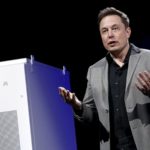Last week, Oslo’s Nel ASA (ticker: NEL) reported it had received a $5.5 million purchase order from Salt Lake City’s Nikola Motor Company.
It sounds like the normal course of business, except when you consider the order from the Utah-based semi-truck manufacturer was responding to a bump in demand for its hydrogen electric over-the-road trucks.
Nel Hydrogen is a manufacturer of hydrogen fueling stations. Nel’s CEO Jon André Løkke said these first stations for Nikola Motors are demo stations that “will lay the groundwork for the world’s largest, most efficient network of low-cost hydrogen production and fueling sites.”
The Nikola prototype trucks are hydrogen electric powered semi-trucks that Nikola has said it will begin testing with fleets in 2019. The company’s CEO Trevor Milton said he expects to begin full production in 2021.

The early plan called for 14 large-scale sites. However, Nikola and Nel are now evaluating if that should be doubled to 28 stations, the companies said in a press release.
Yesterday Nel announced that its H2Station® had achieved a milestone—the world’s first UL system certification of a hydrogen fuel dispensing system station, which establishes a benchmark for safety and legal compliance for hydrogen fueling stations. Nel said achieving the certification at the manufacturing level should help simplify the permitting process in the United States.
Historically, hydrogen stations in the U.S. have featured customized designs with a limited field evaluation certification, completed at each site after installation. The difference, according to Nel, is that its H2Station® is a standardized hydrogen fueling product.
The UL hydrogen fuel dispensing system certification is achieved for the product design as part of the manufacturing process, which, according to Nel, greatly reduces the time and cost needed for extensive technical assessments and tests at site during installation. Nel makes these at its factory in Norway, which is the largest in the world for this purpose. The company said can build up to 300 hydrogen fueling stations per year at full capacity.
How does the fueling with hydrogen work?
Nikola addresses the question about refueling with hydrogen in its Q&A:
Q: How many hydrogen fueling stations do you plan on having?
A: We currently show an illustration on our website showing what coverage for the entire country would look like with 364 hydrogen fueling stations. We plan to develop fueling stations first in markets in which we have the highest demand for our trucks and will develop more stations over time. Ultimately, the goal is to have a station within 400 miles of you at any time. That means you could pass up to 2 stations before you need to refuel, giving you great access to fuel anywhere in the country.
Q: How many trucks can fuel at one time at your stations? How long does it take to fill up?
A: The capacity to fill trucks at a station is only limited by the number of pumps at each station. We currently plan to have between 5-10 hydrogen fueling pumps at each of our stations. Normal filling times will be between 15-20 minutes from empty.
Q: How is the hydrogen stored at each Nikola™ Motor fueling station?
A: The hydrogen is stored in liquid form onsite at each station.
Q: How is the fuel stored on the truck?
A: The hydrogen on board the Nikola One™ will be stored in compressed hydrogen tanks.
Q: Can I plug in to charge the battery pack at a Nikola™ fueling station?
A: Yes. Each Nikola One™ comes equipped with a DC charger which will enable the driver to top off the battery not just at Nikola™ fueling stations, but at any location offering electrical charging. This will be especially helpful to run the amenities in the cab all night long without the need for the fuel cell to turn on. While you don’t need to “plug-in” to run the Nikola One™, the trucks will have the ability to tap into electrical power at truck stops.
Q: Will Nikola™ fueling stations include a convenience store, truck wash, showers, etc.?
A: Working with our fueling station partner, we will pick the optimal facilities for our locations.
Hydrogen electric truck orders are flowing to Utah
Nikola is working to produce two Class 8 semi-trucks—the Nikola One and Nikola Two—vehicles that will compete with Tesla’s upcoming electric Semi.
Nikola said this week that “one of the most respected brands in America just signed an order to convert 100% of their fleet over to Nikola trucks.”

Green Car Reports said this week that Nikola, which had taken customer deposits for orders of the hydrogen electric semis, would now return the deposit money to customers as a gesture of goodwill.
“Great news! All reservations will be refunded 100% and you won’t lose your place in line. We don’t use your money to operate our business. We want everyone to know we have never used a dollar of deposit money in the history of our company. All deposits will be refunded < 60 days,” the company said on Twitter.
Green Car said that Nikola followed up with a second tweet, saying, “Over 8 + billion [dollars] in pre-order reservations, so who needs deposits?” The total described last week might amount to as many as 30,000 pre-orders, according to Green Car.
Nikola is offering incentives to early buyers, including free hydrogen to charge the truck’s batteries for its electric drivetrain. No other fuels are used with the exception of if a driver chooses to plug in for charging at stops, rather than use the onboard hydrogen charging system.
Extra benefits
The Nikola One™ will be available to lease or purchase, both of which include unlimited miles, unlimited fuel, warranty and scheduled maintenance for seven years, according to the company. In addition to the unlimited fuel (hydrogen), economics of driving a Nikola hydrogen electric semi-truck include spending $0.00 for diesel fuel.
Nikola says that its goal is to provide a driver with a new truck every seven years, at which time owners can renew the lease and trade in for a new Nikola One™. Nikola established an exclusive arrangement with Ryder System, Inc. to offer sales, service and warranty at its 800+ locations.
How the hydrogen fuel cell works with the propulsion system
The Nikola One™ has a fuel cell on board that charges the batteries. This fuel cell runs on hydrogen and will need to be refueled every 800-1,200 miles depending on terrain and load size.
A chemical reaction between oxygen and hydrogen produces the electric power, and when the transportation fuel is pure hydrogen, the only resulting emission is water vapor. Depending on the energy source that causes the chemical reaction, hydrogen can be an emission-free transportation fuel, according to the U.S. Department of Transportation.
Nikola’s Q&A details some of the charging logistics:
Q: How often do I need to charge the batteries?
A: You don’t. The truck has a fuel cell onboard that automatically charges the batteries for you. You never need to plug in. However, the Nikola One™ will also feature a charging port to charge the batteries when you are at a facility that offers electric charging.
Q: How often does the fuel cell turn on during normal driving?
A: There are many factors that determine when the fuel cell turns on to charge; terrain, load to motors, battery longevity, battery level and more. We anticipate the fuel cell will run 50% of the time.
Q: What is the horsepower and torque?
A: Our current prototype has 1,000 HP and 2,000 ft. lbs. of torque. This may change in the production model. The Nikola One™ will outperform any line haul diesel class 8 truck on the road today.
Tesla’s big truck: the orders are rolling in here as well
Though electric car entrepreneur Tesla (ticker: TSLA) is preoccupied ramping up its Model 3 auto production, CCJ News reported that California-based truck leasing company TCI Transportation placed an order for 50 Tesla Semis. TCI will add the electrics to its fleet of more than 2,000 trucks. Other reservation holders for the Tesla electric semi-truck include FedEx, UPS, PepsiCo, Anheuser Busch, J.B. Hunt, WalMart and Ruan Transportation Management. Late last year, UPS placed an order for 125 Tesla Semis, while PepsiCo reserved 100 and Anheuser Busch reserved 40, the report said.

According to the report from Green Car, other traditional semi manufacturers including Peterbilt, Kenworth and Freightliner have trucks with alternative forms of propulsion in the works.
Read prior Oil & Gas 360 coverage of the topic, including natural gas powered transportation here.







